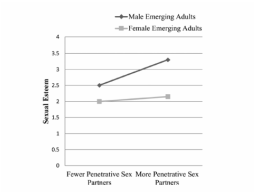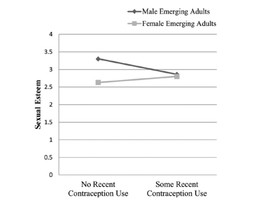But I sometimes find myself coming back to the basics. And one procedure I return to again and again is straight out asking participants how they feel about something, with open-ended responses. In the University Life Study, we tracked college students for 7 semesters, and each semester asked about their engagement in 6 different sexual behaviors. Thus, we could catch the first time they engaged in any of these behaviors. When they reported engaging in any behavior for the first time, we asked them how they felt about it. We then put together a team to code the emotions expressed in these responses. Sara Vasilenko (lead author), Megan Maas, and I reported the findings in a recent paper in Journal of Adolescent Research. In the end, because the data were nested, we had to use MLM, but I think the true story is in the simplicity.
Across the different behaviors (kissing, touching, performing oral sex, receiving oral sex, vaginal sex, and anal sex) the most commonly expressed emotions after first experience were happy, excited, fearful, and indifferent. One of my favorite quotes, reported in the paper, was a young woman describing her first experience of vaginal sex during her first year of college: “It felt awesome and I’m happy I lost my virginity to my boyfriend and I am happy I did it at the time I did. I had a great time and I don’t think I will ever regret it.” I can just picture her saying that (or texting that) to a friend. Another favorite is this young man’s description of his first experience of kissing in his third year of college: “Heart racing—disbelief. Very exhilarating.” Reponses were not all positive though; this one, by a young woman who experienced first vaginal sex in her second year, is heartbreaking: “I felt like I had made a horrible mistake. I felt ill and sick with myself. I was depressed.”
Emotions varied by type of behavior. Overall, students reported more positive than negative emotions. Students were generally more excited and less negative about kissing than about vaginal sex. Less positivity was expressed about anal sex and performing oral sex than about vaginal sex. Overall, emotions seemed to be more positive if individuals perceived low risk/threat, and/or received more direct stimulation.
There were also some gender differences, with young men more likely to report feeling happy and excited than young women about all behaviors. Young women felt more negative about vaginal sex, anal sex, and performing oral sex than young men did. It may be that young women feel more pressure to comply with behaviors before they feel ready, and also put more emphasis on foreplay than men do.
Overall, the findings highlight the positive feelings that many young adults have about sexual experiences that first occur in late adolescence/early adulthood.
“The post College students’ first experiences of six different sexual behaviors first appeared on Eva Lefkowitz’s blog on December 14, 2015.”



 RSS Feed
RSS Feed
